Introducing Ye Olde Taxidermist, my entry in the HBS Creatin’ Contest 2016.
——–
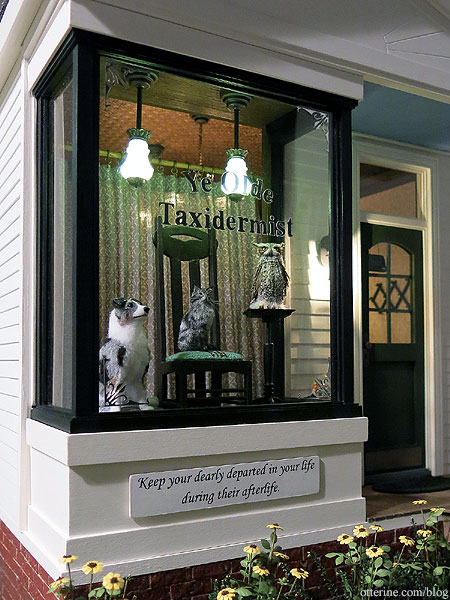
Keep your dearly departed in your life during their afterlife. That is the heartfelt mission of Ye Olde Taxidermist, though the shop also caters to naturalists by preserving fine animal and bird specimens for posterity.
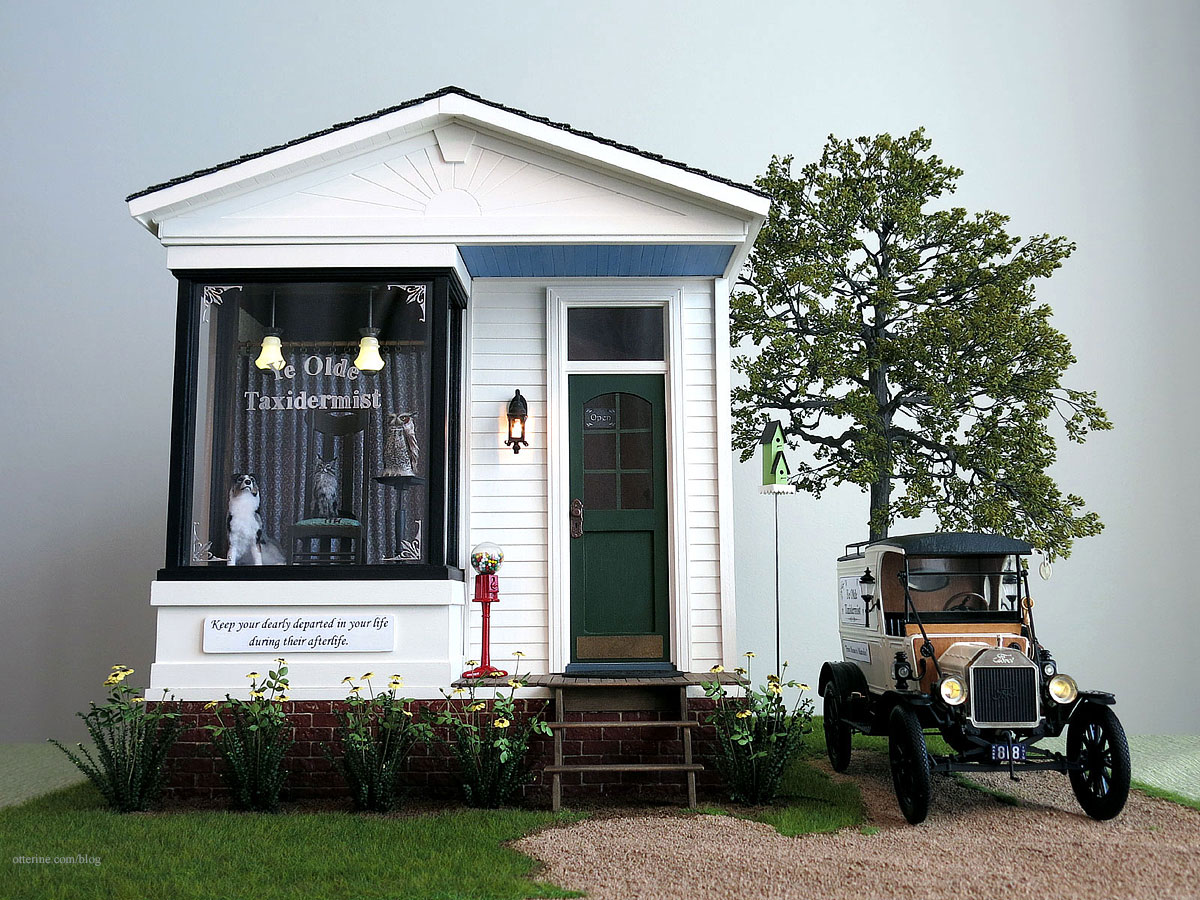
Ye Olde Taxidermist makes house, or farm, calls in a stylish Model T Van.
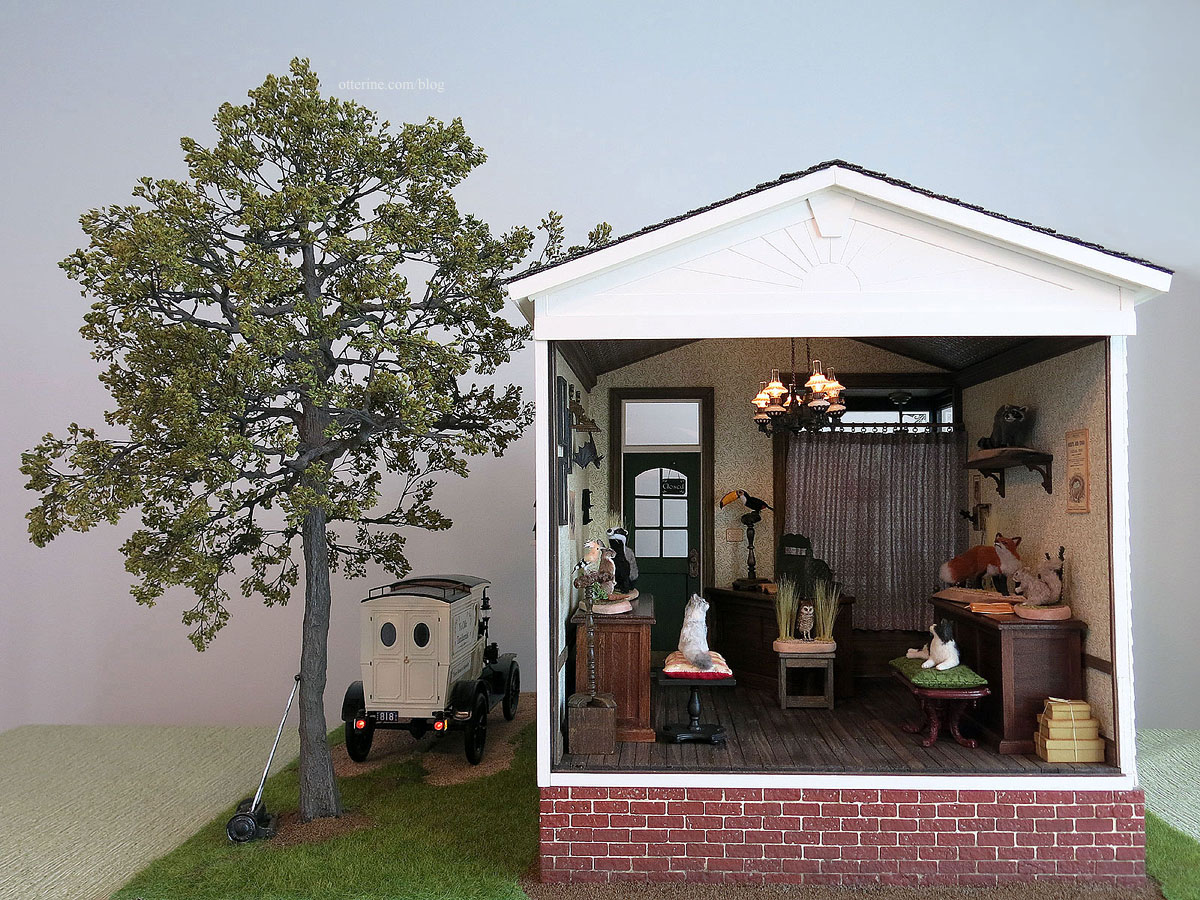
The shop even has a telephone, if you are so inclined.
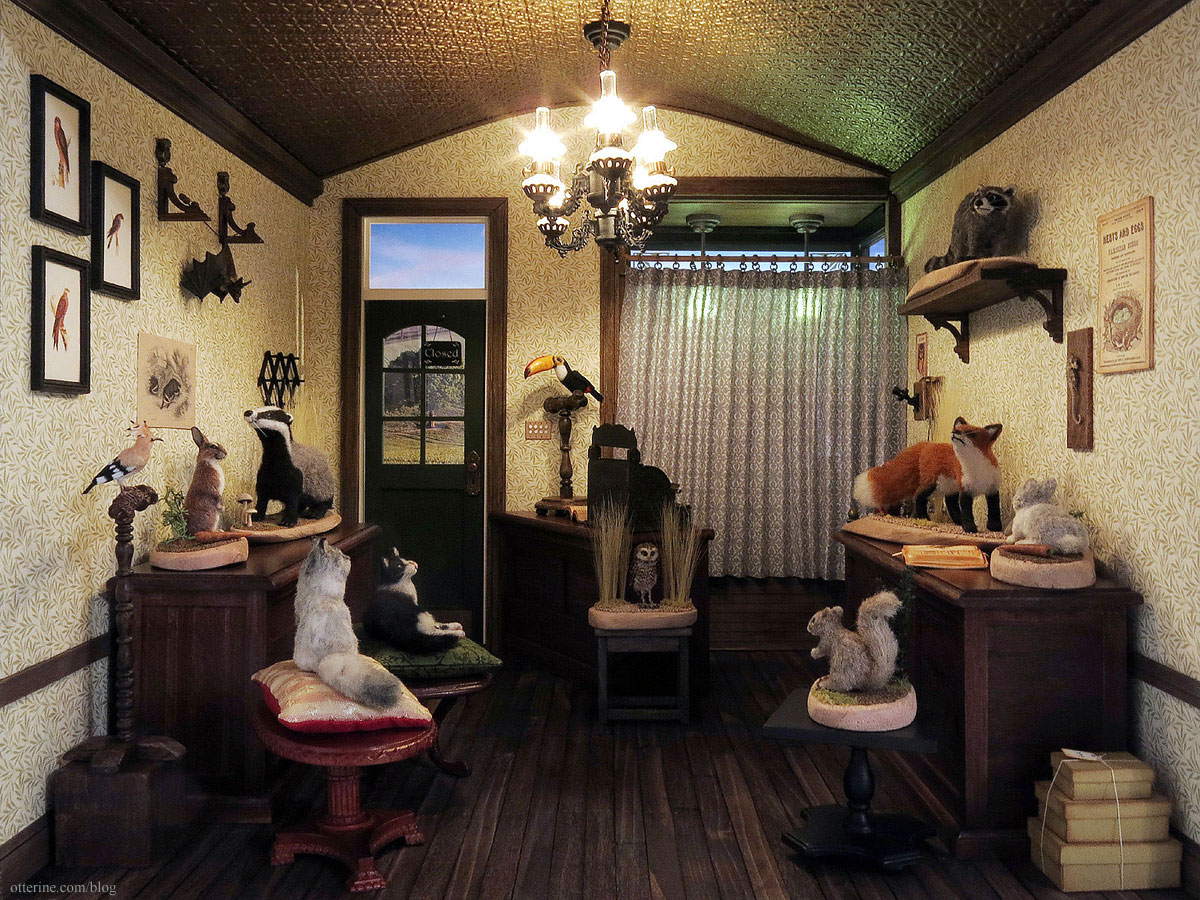
No animals were harmed in the making of this build. In fact, they all had great fun seeing who could stay still the longest. Roland kept making his holy crap, I think I’ve been stuffed jokes and making this face, which caused an onslaught of giggling among the rest. Silly animals! :D
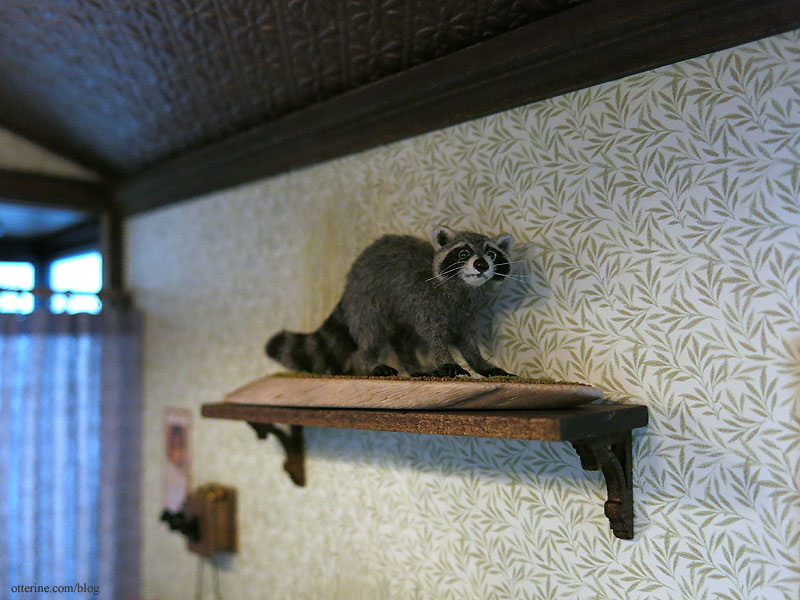
——–
Ye Olde Taxidermist started as the Backyard Bungalow kit.
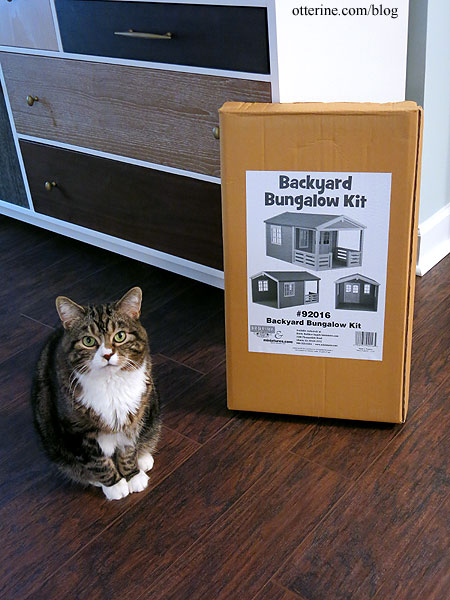
I added two inches to the foundation and cut down the depth of the front porch. The foundation has egg carton brickwork. I eliminated the side windows to save on wall space and covered the exterior with clapboard siding sheets.
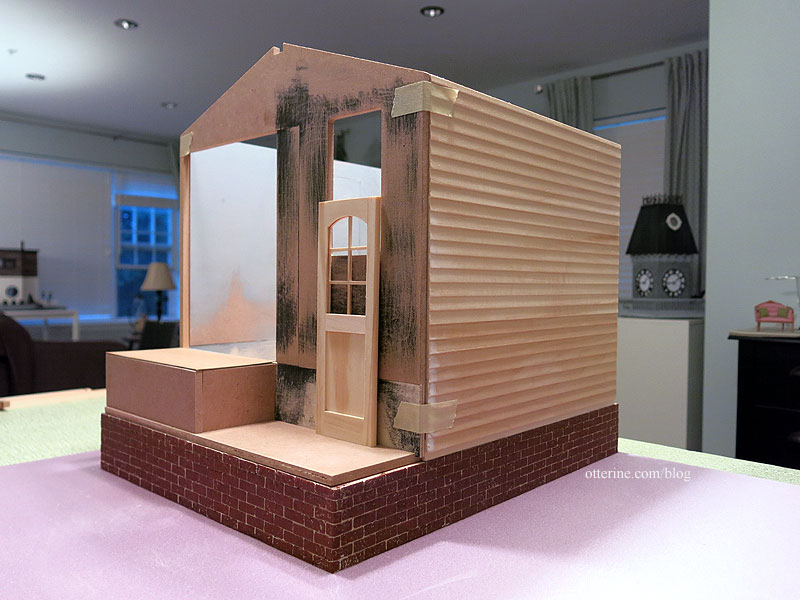
I added a removable back wall that is actually done in two pieces. The back sunburst gable is glued in place, but the lower wall slides out as needed. The exterior color is Warm White by Americana.
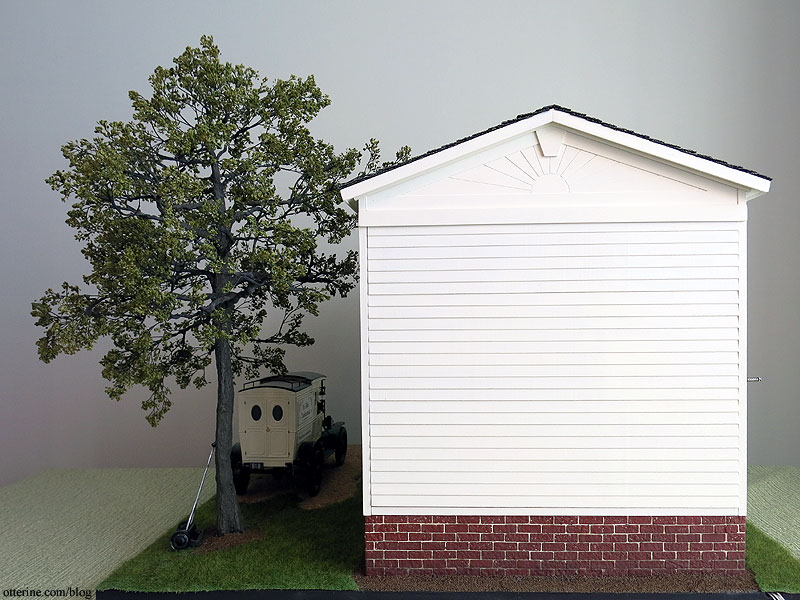
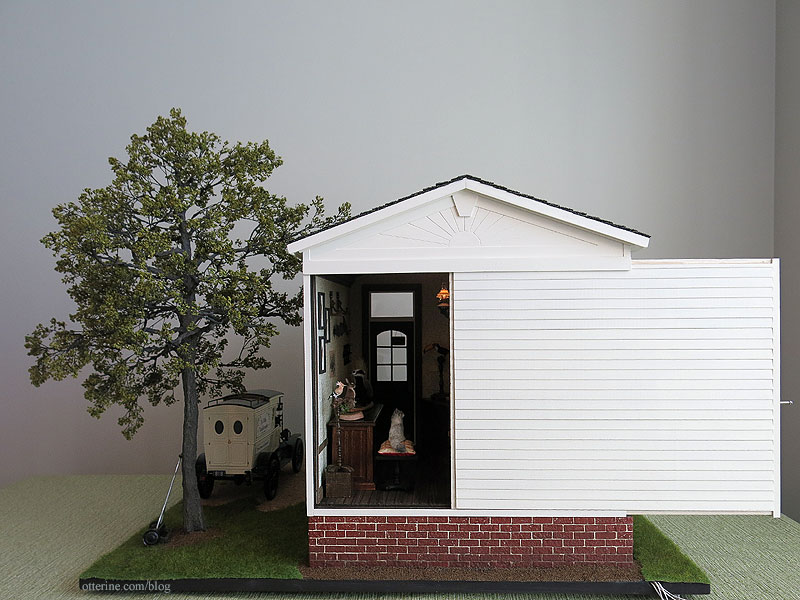
It has interior trim to match the side walls, so it looks seamless when viewed from inside. There’s a jewelry finding nailed to the side as a knob.
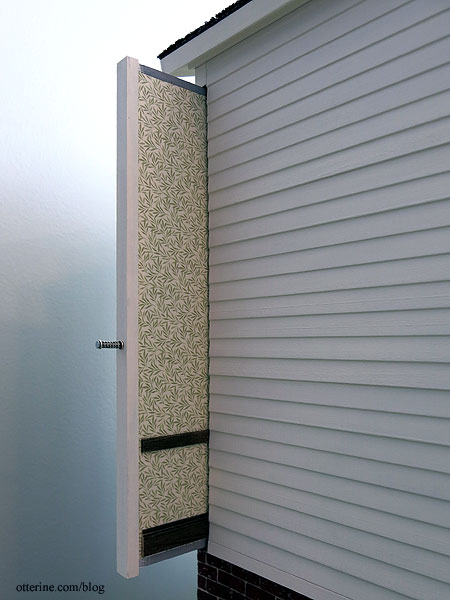
Suppose I should have put some art on that back wall. :D
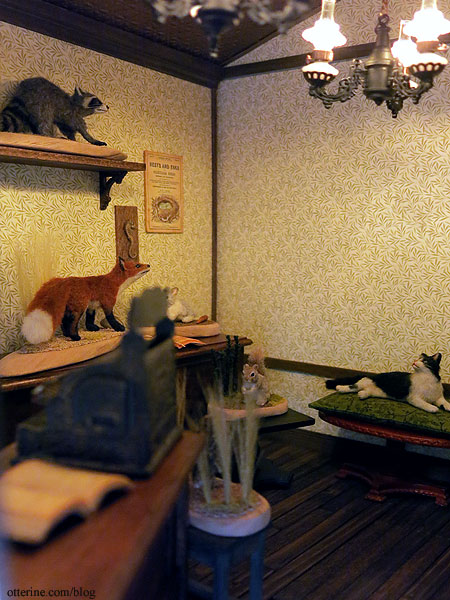
I changed the kit’s double door to a single door with a transom window. The door color is Plantation Pine by Americana, and the frame is Warm White, also by Americana. I used Opryland door hardware and made the kickplates from heavy paper. I painted the paper antique bronze and added nail detailing. The door lamp is a black coach wall sconce.
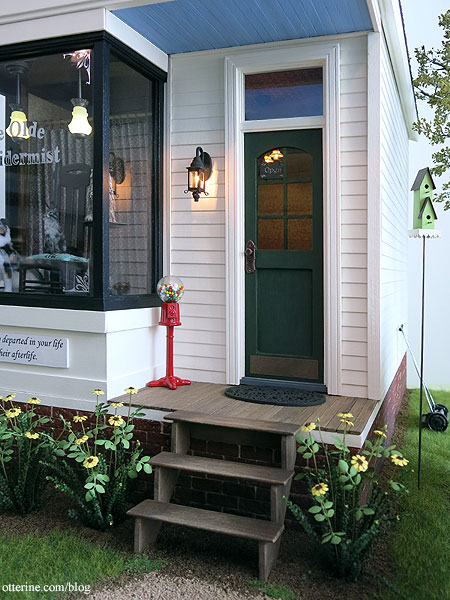
The oval doormat is from Arjen Spinhoven Miniaturen. The porch soffit and floor boards are skinny sticks, with the soffit painted French Blue by Folk Art. The gumball dispenser is from Hobby Lobby.
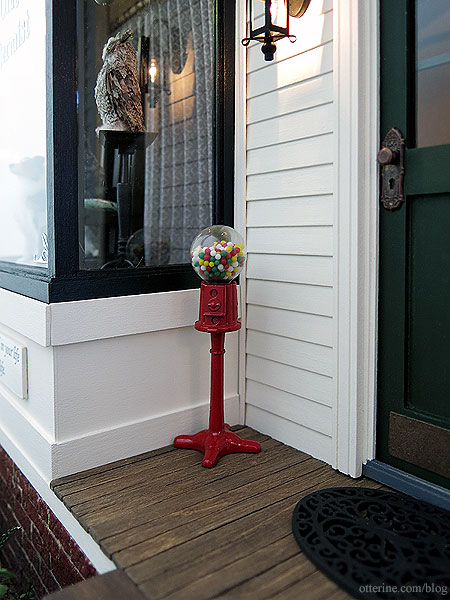
The display window showcases some of the dearly loved pets of the shop owner. Sherwood is by Michal Gvir, Isabeau is by Maya Schippl, and Grover is by tmd_art.
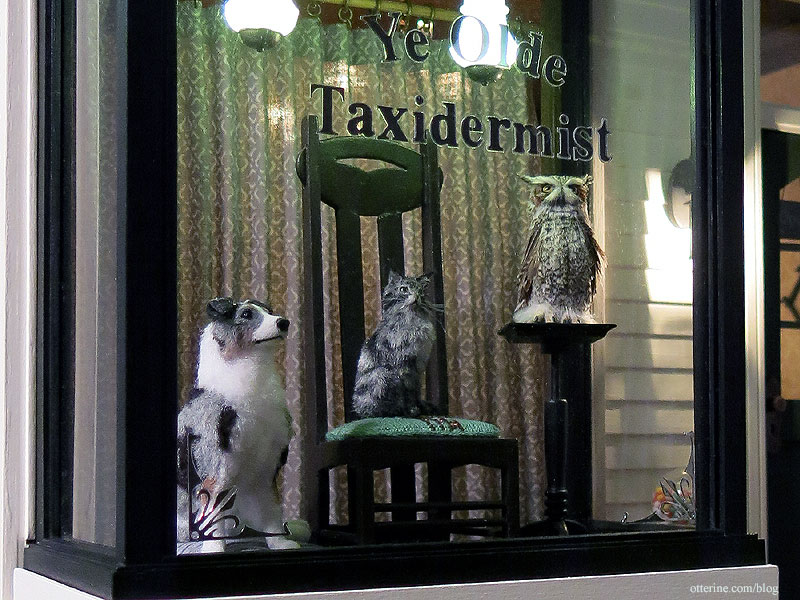
The Mackintosh chair features some of the first miniature needlework I stitched. I refinished the wood as well. I did research this chair to see if it would be good for a 1915 setting. Having been created in 1898-1899, it was already a bit dated. :D
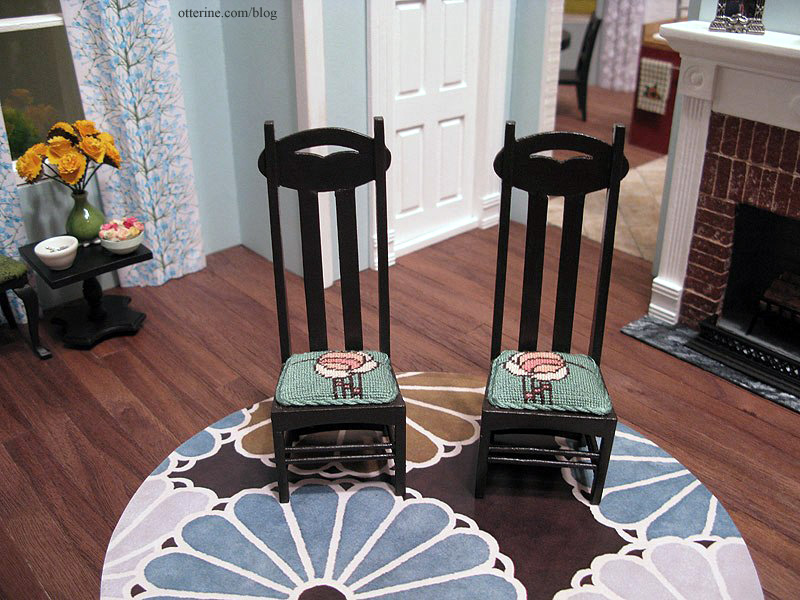
Grover’s stand was made using a candle stand kit by The House of Miniatures, with the height lowered just a bit. The window lights were made from Chrysolite kits (one from my stash, and one from Debora). I altered them from chain lights to post pendants with aluminum tubing. I also used 3mm LED bulbs from Evan Designs for longevity. They look like true bulbs as well. :]
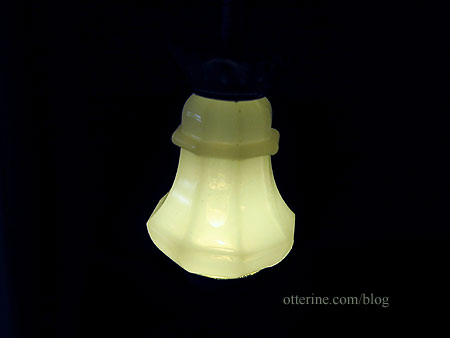
The window unit and its base are removable for ease in changing the display. It would have been cumbersome to reach through the back of the building and set the display in reverse from behind. The window unit’s trim disguises the fact that it’s a separate assembly. I have the trim held on with museum putty.
The whole window assembly is built so I can remove the window plastic to replace it or just swap it out. At first I planned to slip the glass in through the top, hence the open slot. Now, the whole top trim is removable. I’ve also run one extra wire under the lower base just in case I ever want to add other lights to the window…or even create a Christmas display.
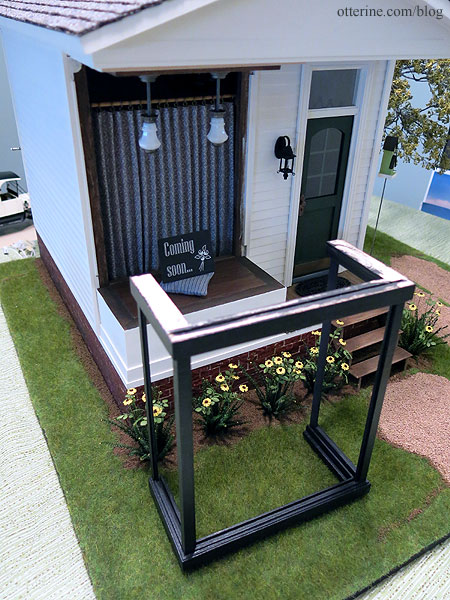
I used silver sticker letters and flourishes on the front pane.

I printed the sign on paper to help me place the silver letter stickers.
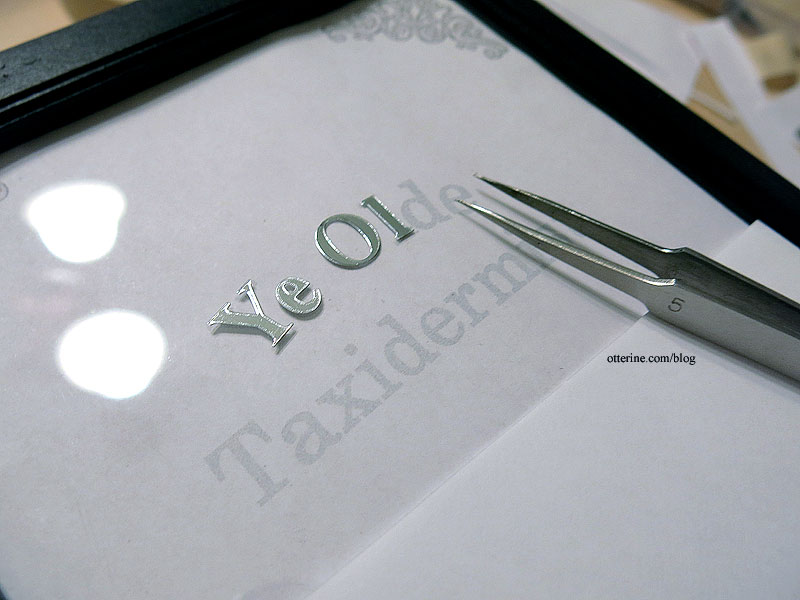
I like how this photo makes it look like a smaller scale build, like quarter scale.
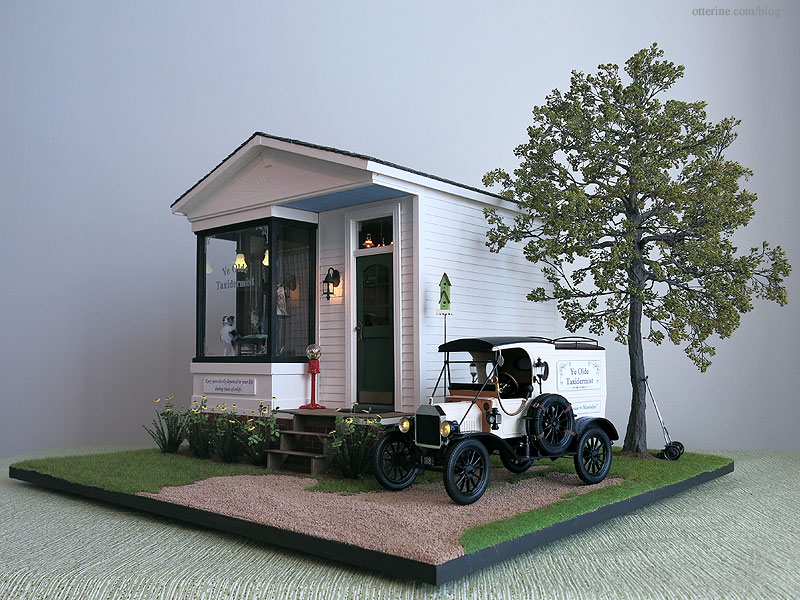
There’s a curtain separating the window from the main store interior. It is removable for cleaning or replacement as needed. The cash register was a gift from Barbara, though I did touch up the paint around the keys (a detail not seen after the effort). The ledger is from Looking Glass Miniature (the stack of string-tied boxes shown in other photos are also from here).
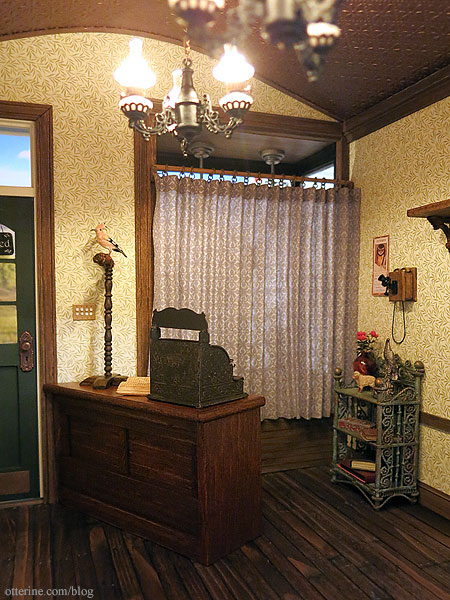
The wall calendar features the artwork of Theo van Hoytema. I edited the art to make an October 1915 calendar. The owl looks positively perturbed — too cute! I painted the copper plant stand with a delicate patina. The flowers and lamb are from Barb’s Corner; the eagle is from ABC Dolls & Miniatures. I made the griffin box from a kit by Lisa’s Little Things bought at one of the local shows.
I modified the Chrysnbon phone/clock/coat rack kit to make a smaller wall phone. I used the hook, receiver, mouthpiece and bells to make my own. I used scrap wood to make the housing and stained it medium brown. I painted the black parts with Testors semi-gloss black. I left off the name plate that many of these phones had since it would have been too small to be legible and would have detracted from the overall look.
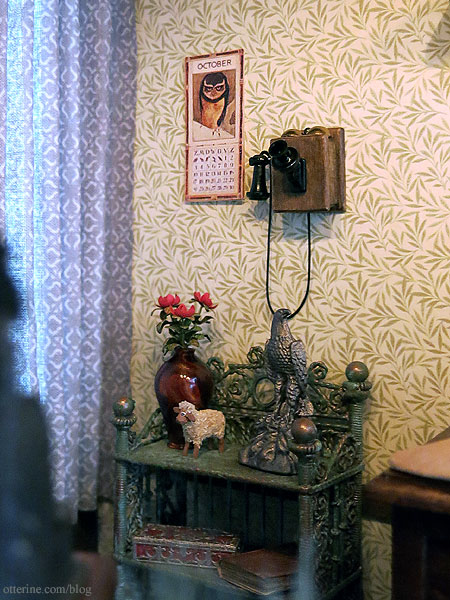
The two large counters are from miniatures.com. I stained them Minwax English Chestnut and used a finishing technique to disguise any large grain or glue spots. The shorter counter by the door was made from a vintage kit found on eBay. I was able to cut the pieces into a custom angled counter that allowed better flow into the shop from the front door.
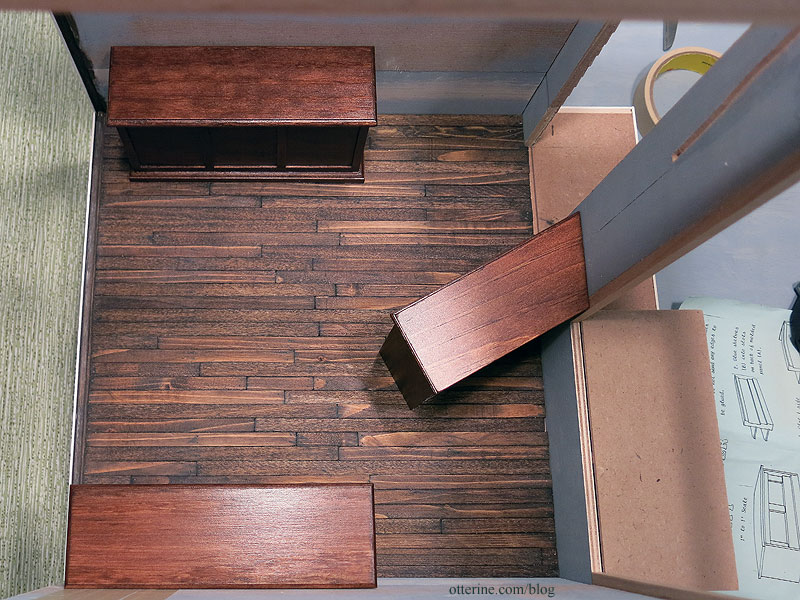
I made the reversible open/closed sign and painted a Chrysnbon coat rack. The umbrella is by FranMadeMinis. I used Brodnax Willow wallpaper and stained the interior trims.
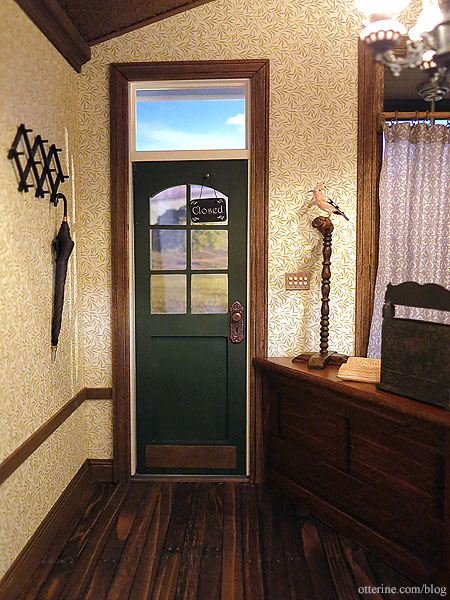
I used three bird prints from A History of British Birds published in the 1850s by Rev. Francis Orpen Morris that I had made for The Newport many years back. They’ve been in storage for some time, so it’s nice to have a few displayed again.
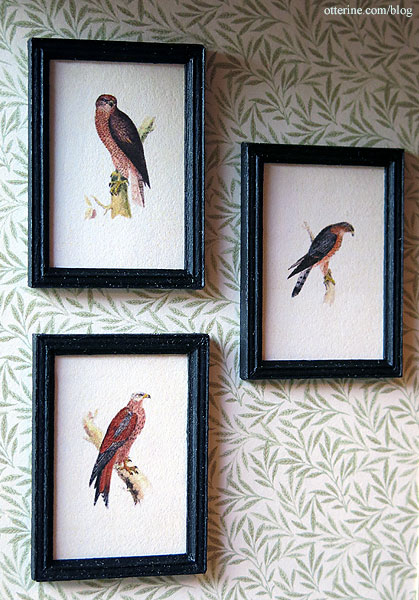
For the rustic flooring, I used the leftovers from The Artist’s Studio flooring, various lengths of board Mike cut for me. I glued the individual boards directly to the mdf floor base using Elmer’s wood glue, supplemented as needed with dots of super glue gel. I sanded the boards with my Dremel Multi-Max oscillating tool, first using 60 grit paper followed by 120 grit paper. The end result was a smoother surface, but I left it a little uneven to keep the rustic beauty. I stained the floor with Minwax Dark Walnut. Since these were different types of wood, the stain didn’t mask the random coloration I liked so well. It just darkened the look overall. Dee-gorgeous! :D I had originally planned to sand this and apply another color as accent but I couldn’t touch this finish, though I did add nail detailing using an awl and paint.
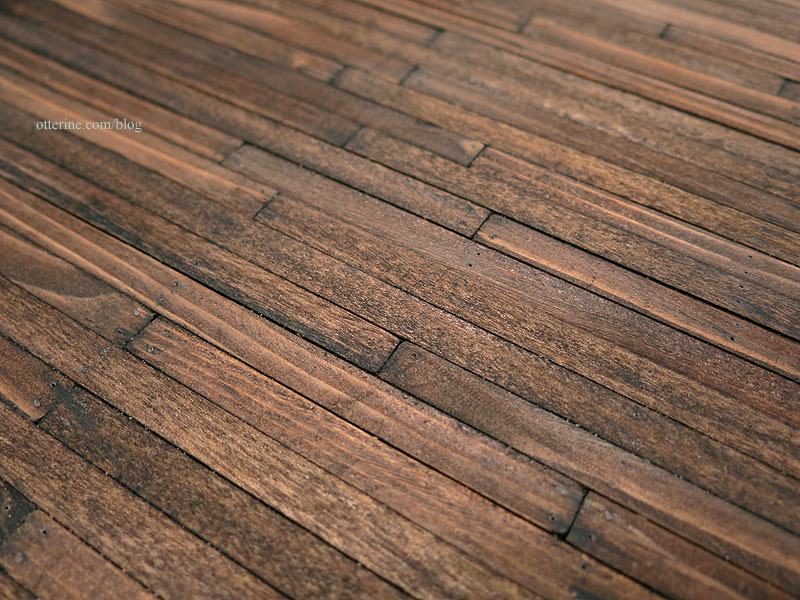
The barrel ceiling ended up being more of a gentle curve, but I still love it. I used crown molding along the side walls as stops for a piece of mat board. It’s covered with textured scrapbook paper called Pressed Tiles – Brown, by The Paper Studio (purchased from Hobby Lobby). Love this paper! I painted it Liquitex Antique Bronze.
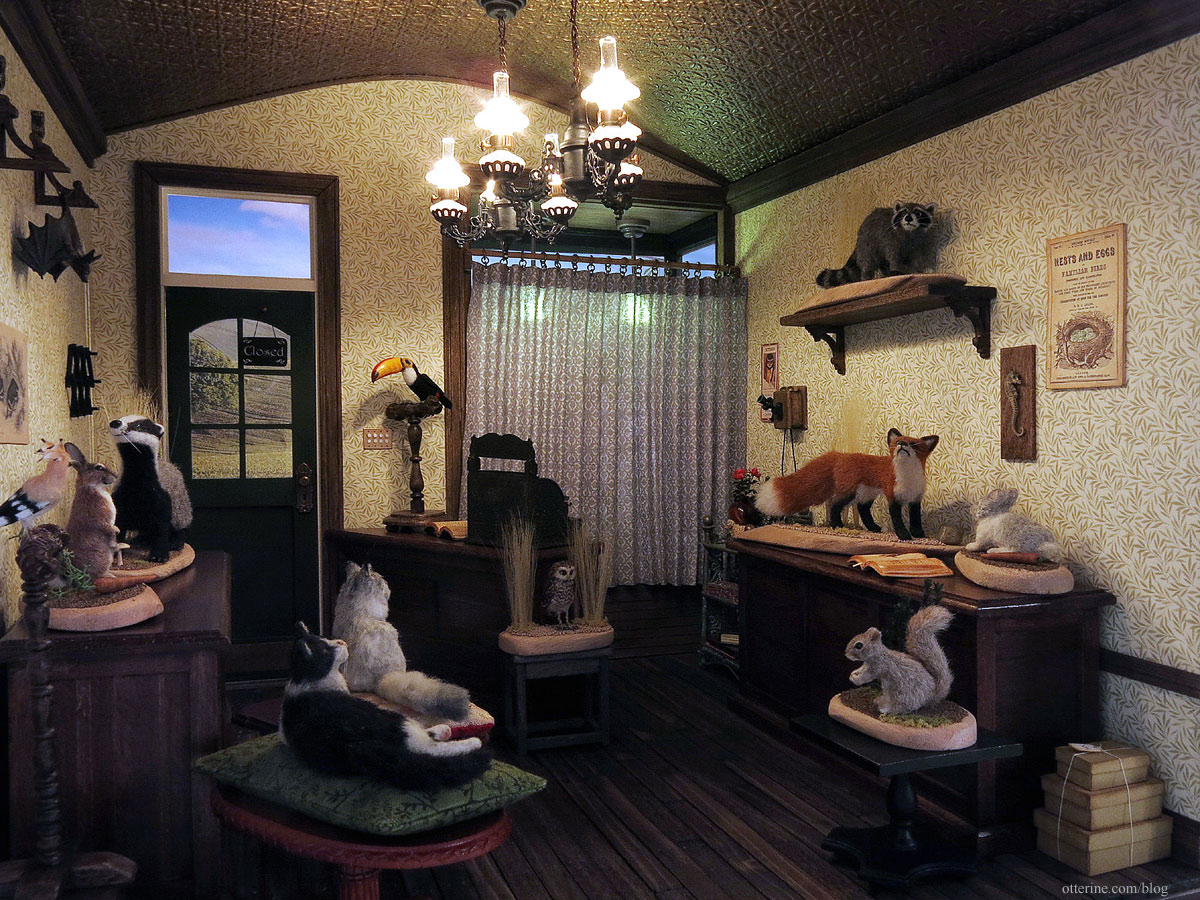
The three-light chandeliers were a test of wills. These were made from Chrysolite Heritage Chandelier kits given to me by Debora. I swapped out the included non-replaceable bulb lights for Cir-Kit Concepts candle sockets with varnished wires. The required splicing of six wires into two bundles of three, ending in one exit wire each, inside the main cone is not an easy task and you get one shot at it because you cut the wires so short. I had to scrap three sockets in one attempt. But, it all worked out in the end.
The chandeliers have bases that are glued to the ceiling. The fixtures have pieces that fit and twist into these brackets, so you can remove and pull them down as far as your wires will allow. This makes for easier servicing — no working in tight spaces. I used bronze acrylic paint to cover the red wires so they wouldn’t be as noticeable. I also changed out the included chain for heavier chain and used wax to hold the hurricanes and shades in place. They are fiddly but perfect for the space.

I made the light switch from polystyrene sheet and rod. Talk about fiddly and small. Those buttons are 1/16″ in diameter.
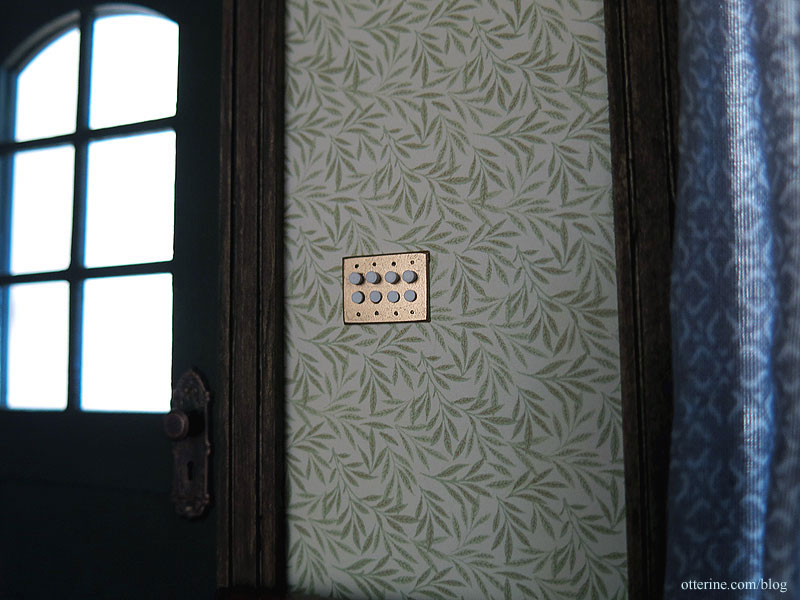
There are numerous animals on display. Most are artisan pieces I’ve collected over the years. I made tiny dioramas for them, though the animals are not glued in place to keep from damaging them.
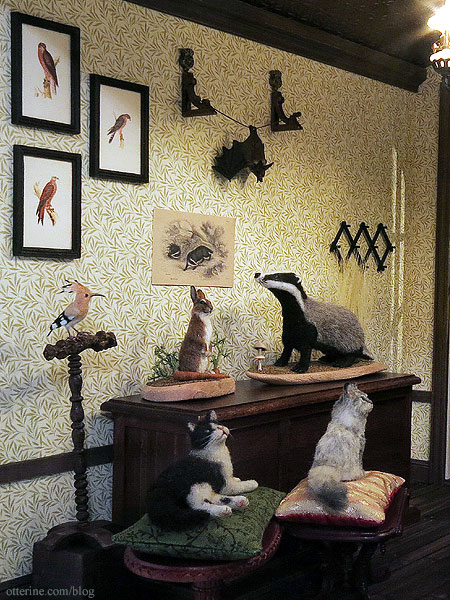
I used leftover scenery materials on top of driftwood pieces. Some bases were cut down and sanded to better fit the size of the animal while others were left as is from the bag.
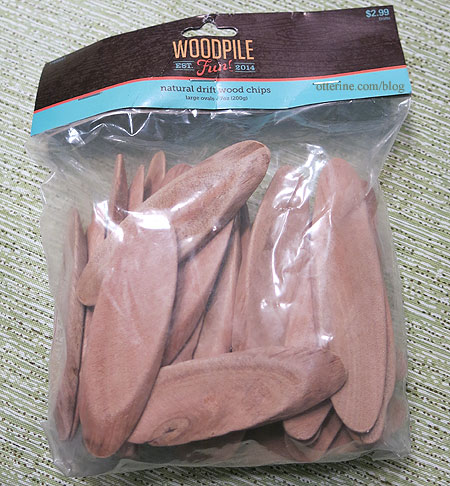
I made the Burrowing Owl, and Friedrich is by Michal Gvir. I made the carrots using the tutorial from Sugar Charm Shop — a few stumps to plant and full carrots for show.
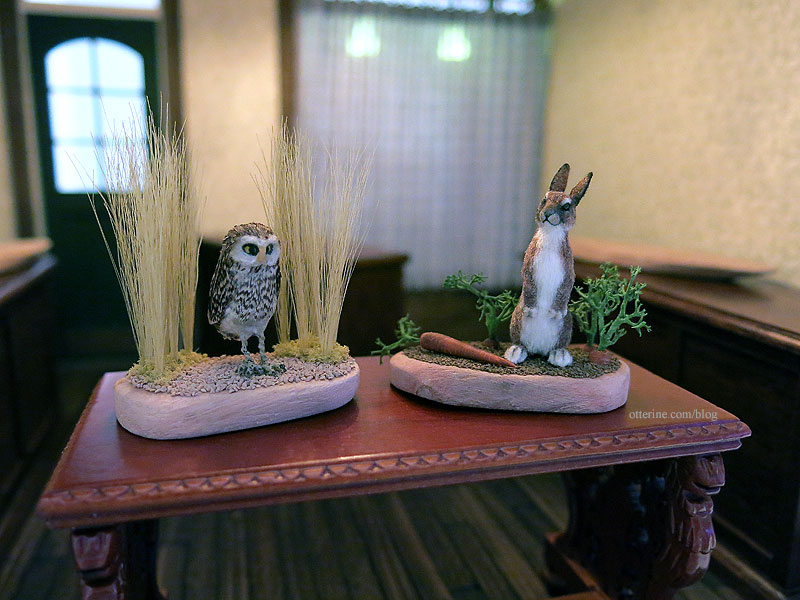
Ophelia is by *Reve*, and Endora – by agzr*studios. I made soft pillow beds for each cat. Barbara sent me the red, pink and ivory silks as well as the nest artwork shown in other photos. The green quilting fabric is from my stash.
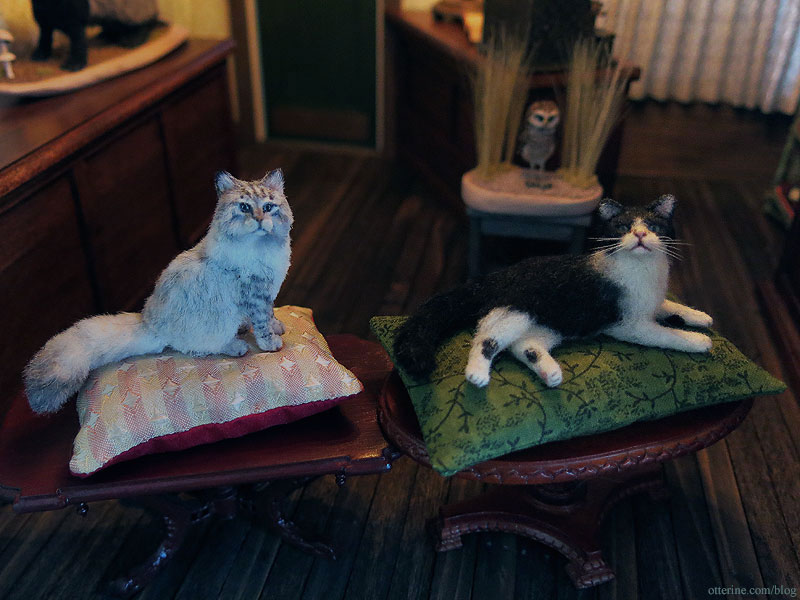
Hugo B. Agerton is by Steve Panner, who also made Roland Sneakypants shown earlier in this post. I made the mushrooms using Peiwen Petitgrand‘s book on making clay food.
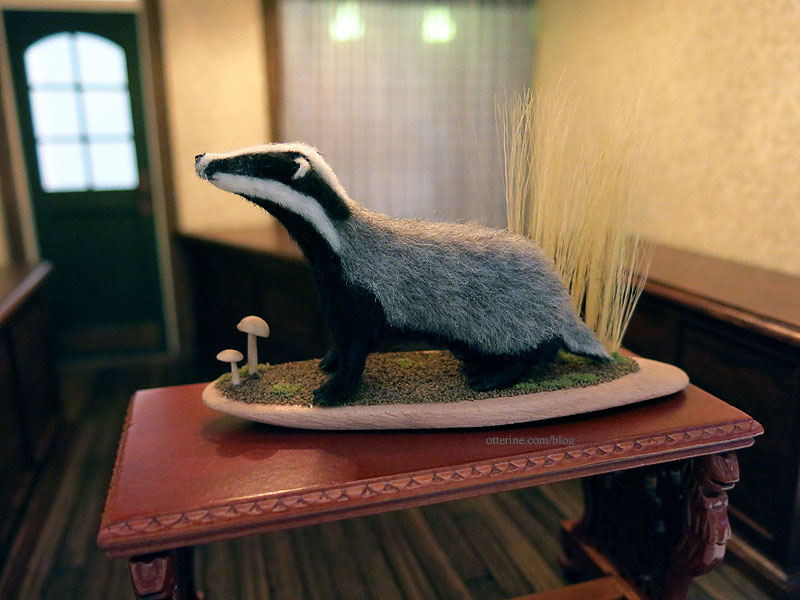
The badger art is from the Graphics Fairy, printed on parchment and mounted on card stock. Clyde the Hoopoe bird is by Katie Doka of FairiesMiniatures.
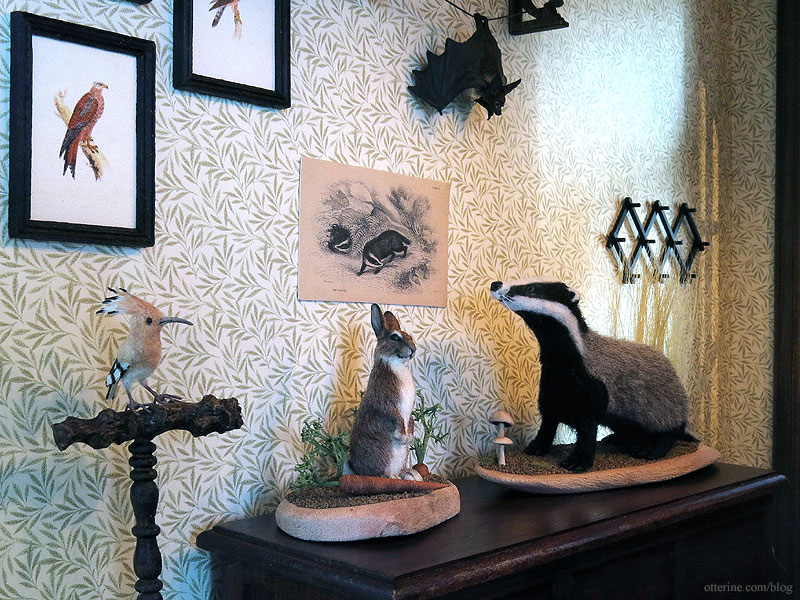
Sanford is by Steve Panner. I added an aquarium pebble, tall grass and bits of foliage to the base.
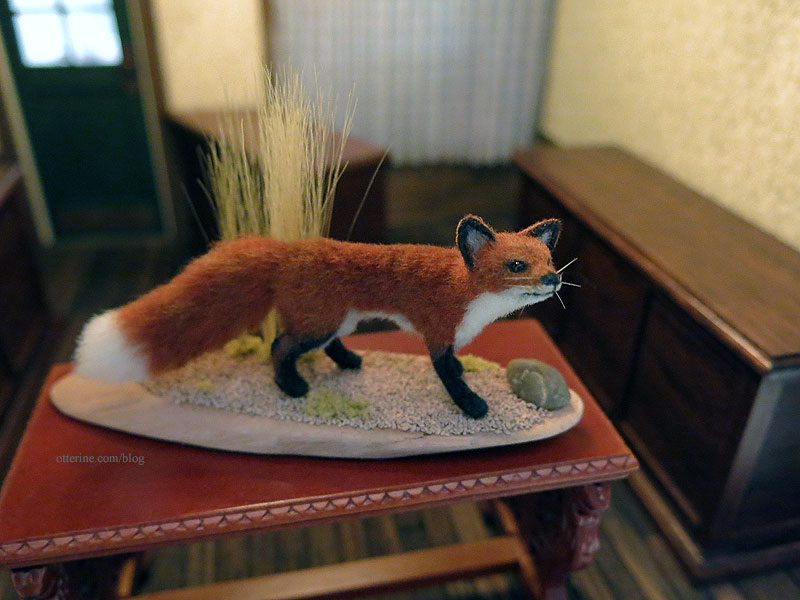
Juniper and Archer are both by *Reve*. I used more of the carrots for Juniper’s vignette.
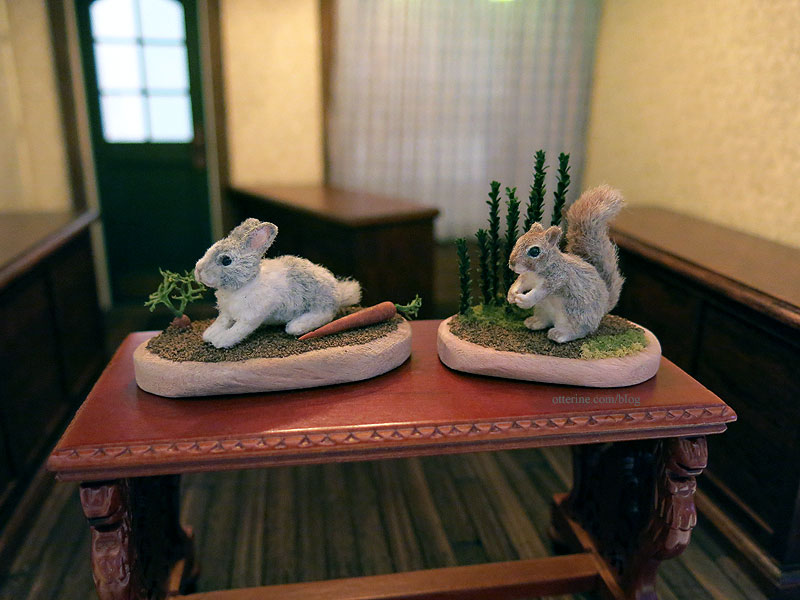
Sam the Toco Toucan is by Katie Doka of FairiesMiniatures.
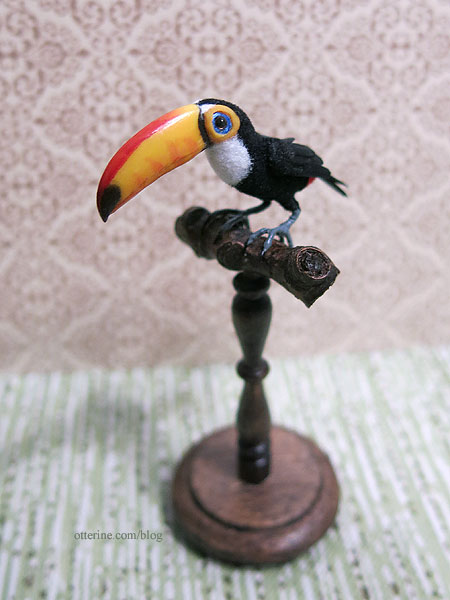
I re-purposed two House of Miniatures items for the bird perches — a bookstand and pedestal desk. I’ve kept the tops for other uses. I finished them in dark walnut with a satin varnish. I used pieces from the old tree branch I used in The Artist’s Studio with the wood stained to match.
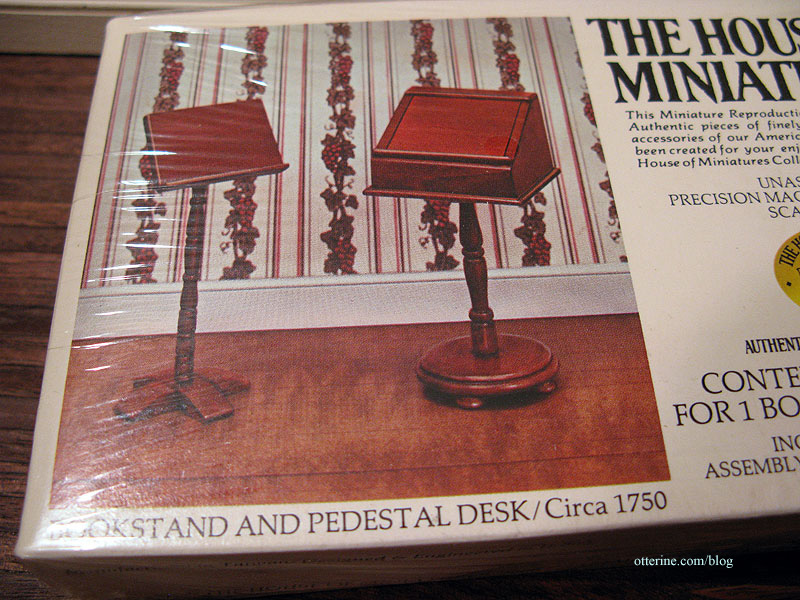
For Igraine by Olga Proshina, I stained two brackets and added jewelry finding accents. A thin floral wire capped with belaying pins holds the bat suspended.
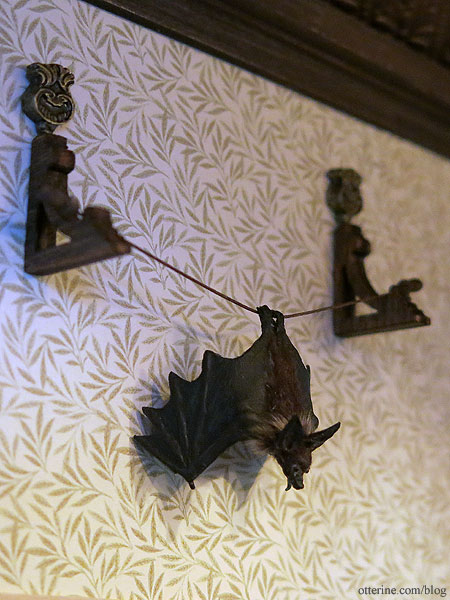
I went through many ideas before finally stopping on a vintage taxidermy shop set c. 1915.
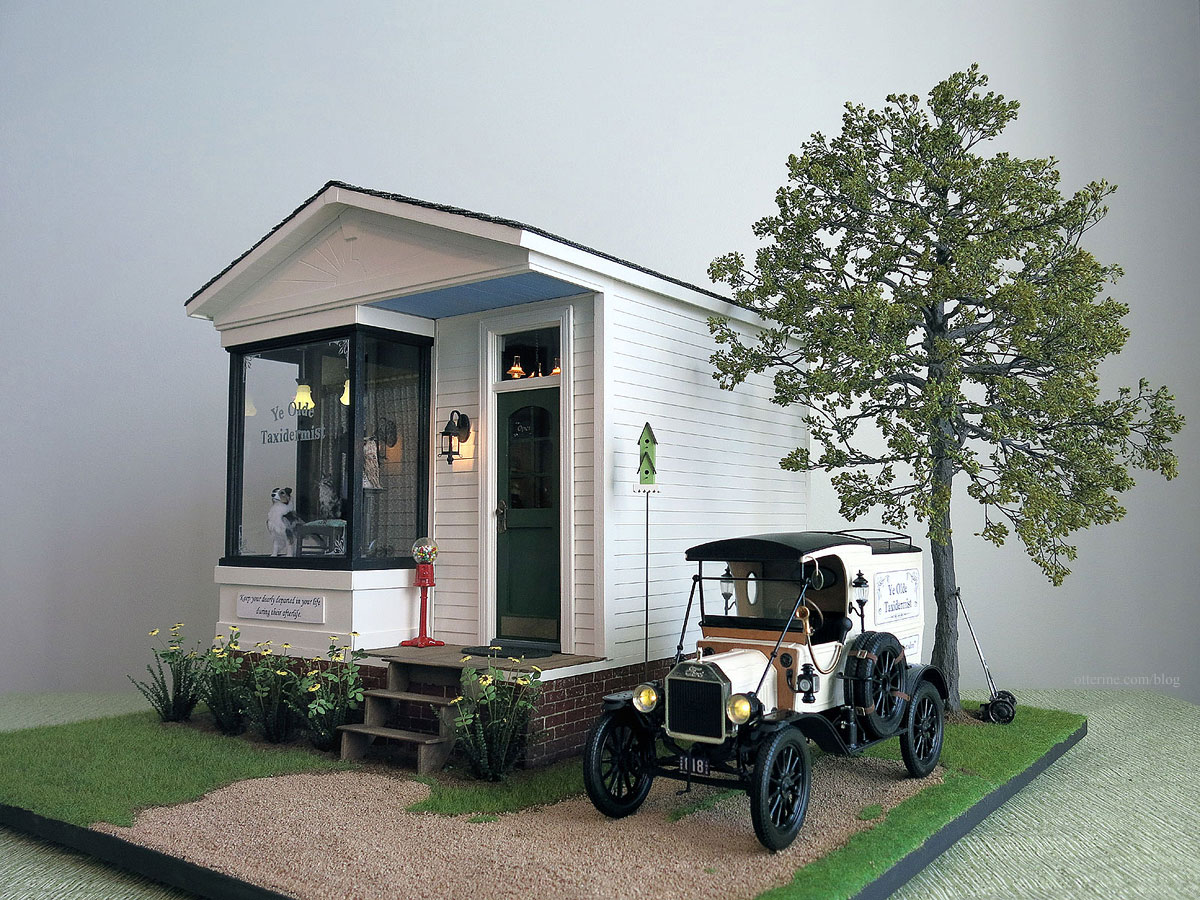
The other ideas were sound, but it was all decided once I found the 1:16 scale 1913 Model T Van kit by Entex that included decals for a taxidermist. From Mouse to Mastodon. I love it! :D
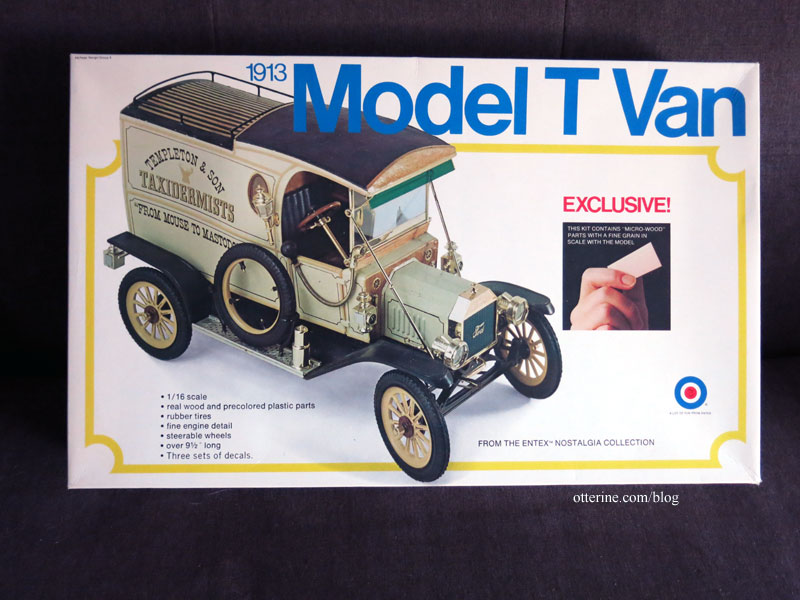
There was more than one kit release over time, but even though I had two kits with different front images, the parts were identical for both. Interestingly, this one is shown built with the driver’s side opposite but with the use of a spare tire instead of the plastic covers. That would not have been possible with the parts molded as they were. Four different sets of decals were included: Carnation Milk, Coca Cola, The Texas Company and Templeton & Son Taxidermists.
I ended up making my own removable sign boards for the van for a few reasons. I wasn’t keen on using the name on the included decals, and I wasn’t sure about my success in applying large decals either. And, I might want to use the van for something else in the future, so I can just swap out the boards. These are printed on regular paper and mounted to bristol paper for added weight. Mini hold wax keeps them in place without marring the paint finish.
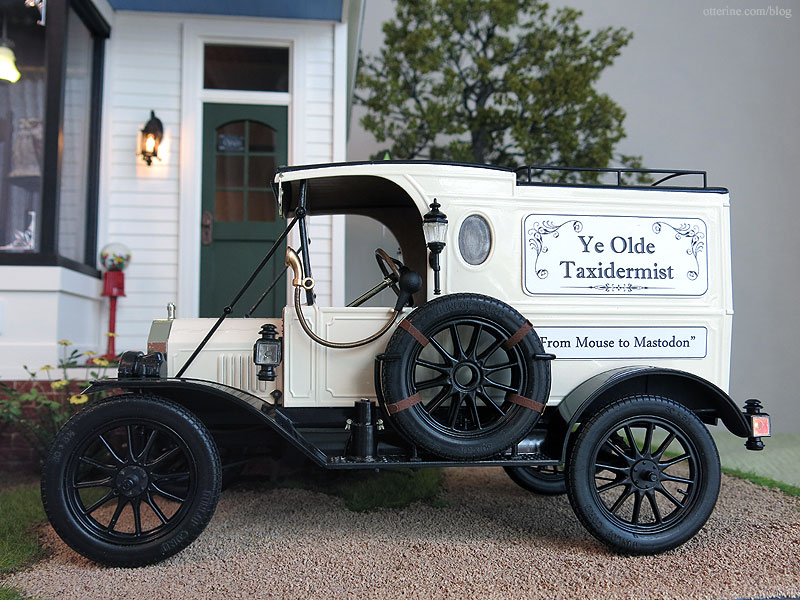
I have a full post dedicated to the 1913 Model T Van build with links back to the individual posts for easier reference. The van fits relatively well for scale in my final project, but I do love it even on its own. This was not an easy or forgiving kit. So many parts broke during assembly, and a few were even broken from the start. I had two kits, and even with that, I ended up having to glue the suspension so the front wheels would not turn and the van would not roll. But, I was able to add LED headlights and taillights. Overall, I’m glad I took on the task and I’m pleased with the look of the final model.
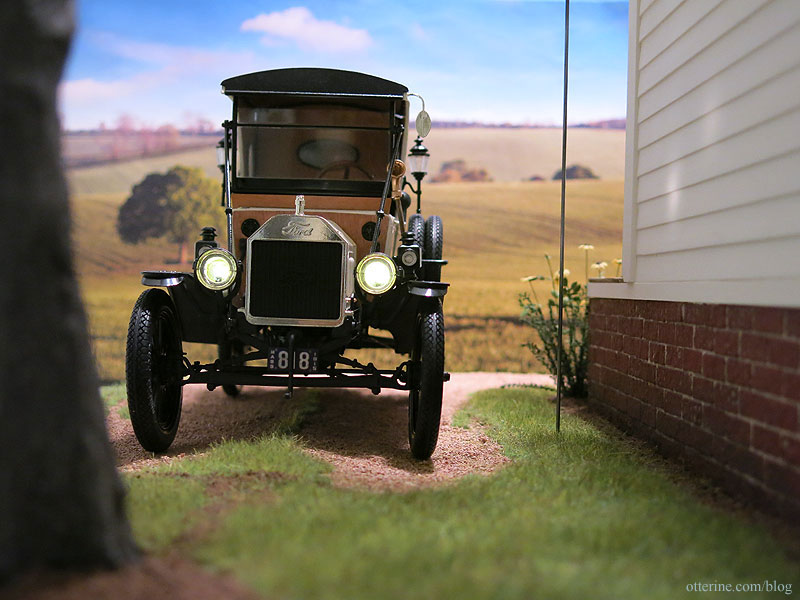
The backdrop used is a countryside landscape I found online with no discernible origin in a google search. I wanted something with a rural feeling.
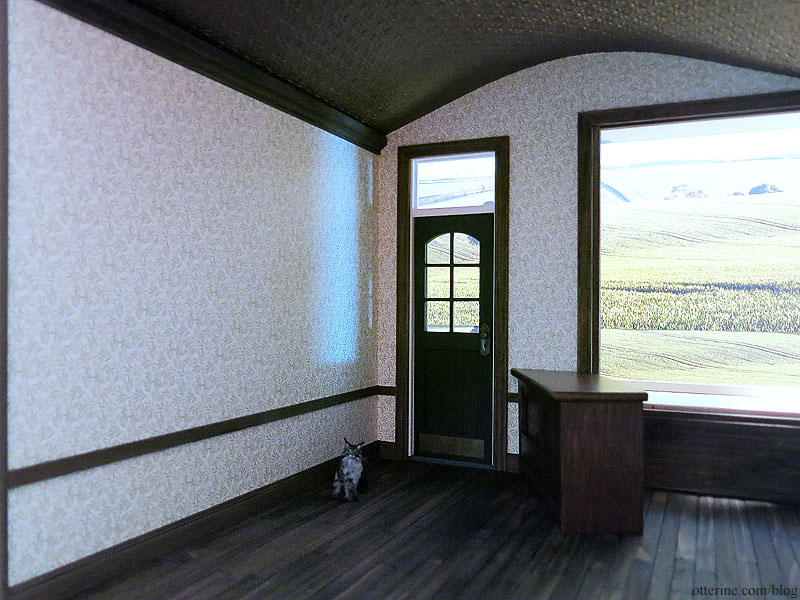
The landscaping board is finished on the edges with iron-on veneer edging. I then glued layers of white 1/16″ foam sheets by Woodland Scenics using Weldbond glue. I went with thin foam so I could keep the land relatively flat on the baseboard while still allowing for natural unevenness.
I used Fine Ballast Dark Brown by Woodland Scenics for the dirt and Woodland Scenics Ballast left over from Baslow Ranch for the gravel. It’s all set in place with Woodland Scenics Scenic Cement. I’ve planted black-eyed Susans along the front. The stairs were built from scratch.
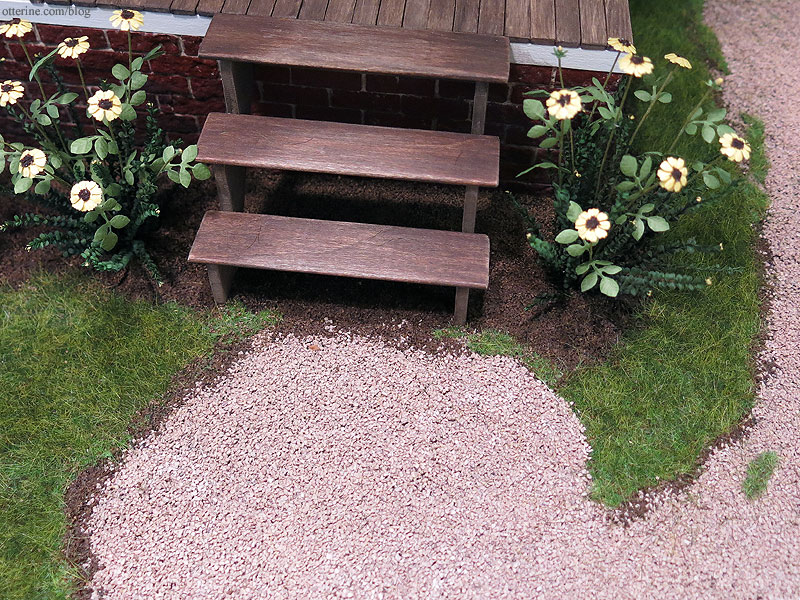
There are depressions in the gravel from where the van has pulled in and out along the side of the building.
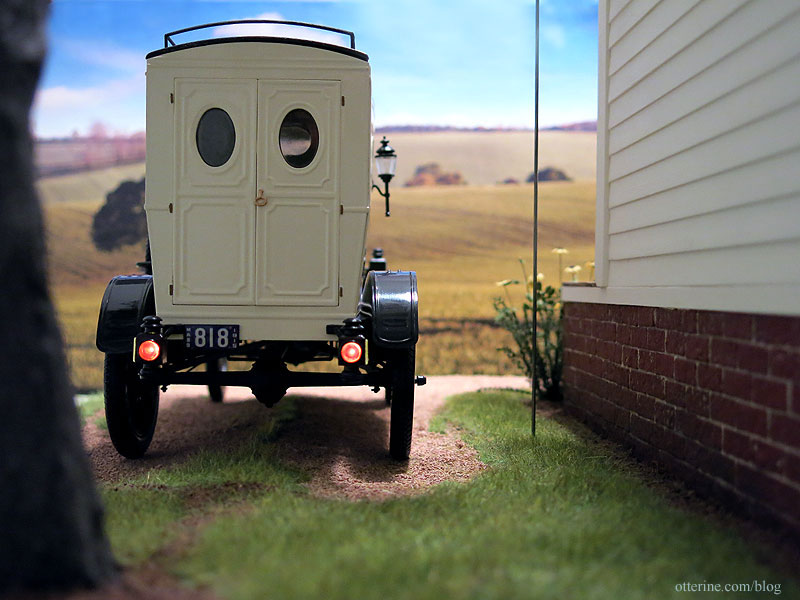
The grass is Heki Wild Grass in dark green.
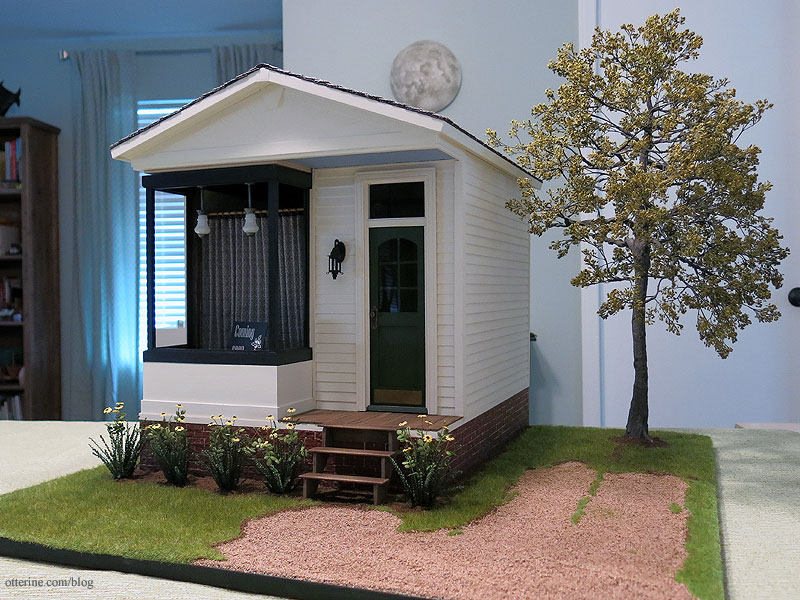
The roof is removable to provide access to all of the wiring as needed.
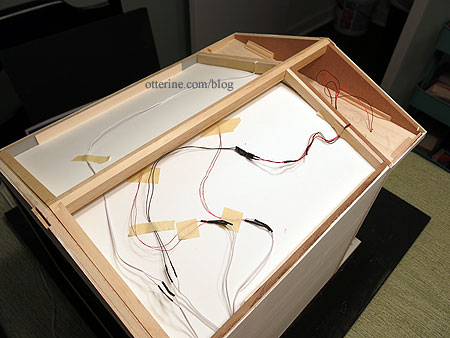
The roof is covered with asphalt shingles by What’s Next (found a vintage lot of these on eBay a few years back). The roof ridge is finished with heavy paper sprayed with stone finish spray paint. I’ve done a shingle lap before, but I just didn’t like the results I was getting this time around. As for whether asphalt was a correct material to use in 1915, well, you’ll be happy to know I did look it up.
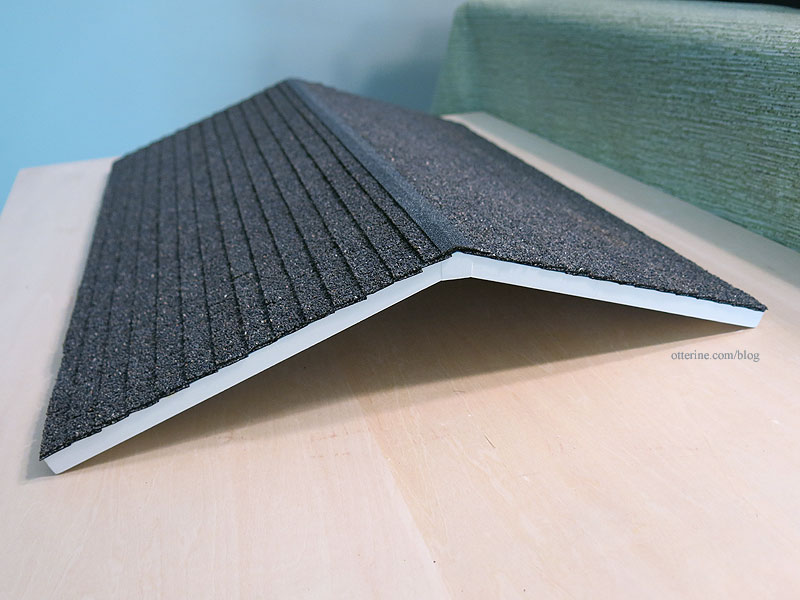
I wanted finished eaves, and I initially tried scoring the mdf boards. That wasn’t as clean as I wanted, so I used some super thin scored wood sheets from my stash and cut piece by piece. Added trims around the edge hold it all in place and disguise the fact that the roof is removable. From underneath, it looks clean and solid.
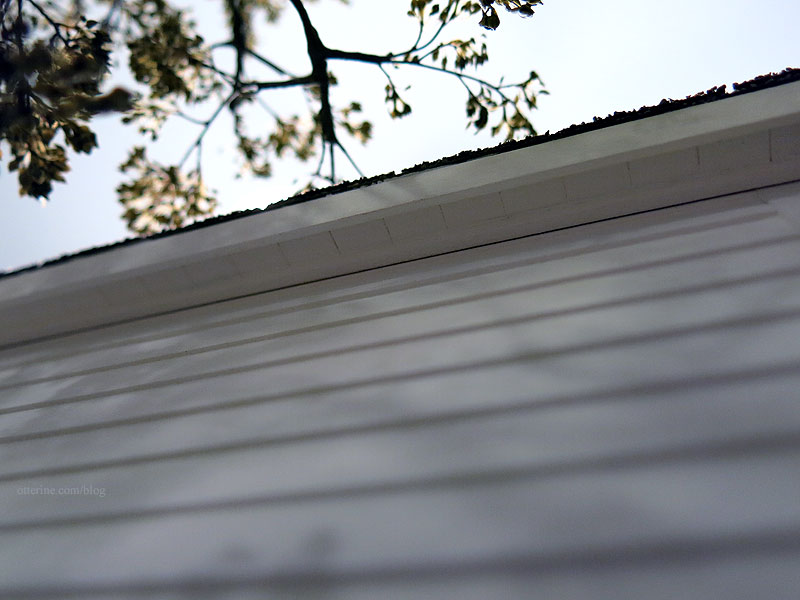
There’s a 19.5″ tall tree adjacent to the building. The height of the tree was meant to put the building in better proportion with the Model T Van since there are different scales at work here.
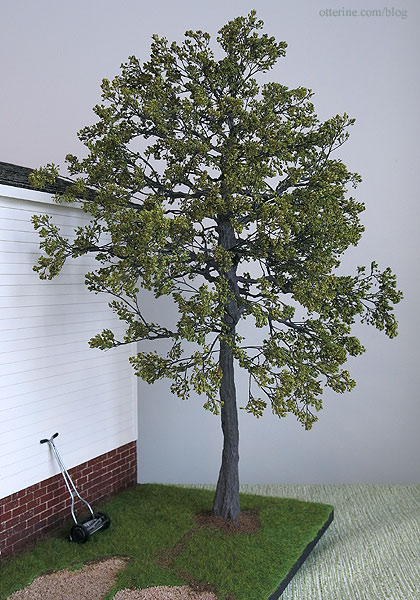
I made one branch to fit over the roof, because who is going to climb a ladder to trim it?
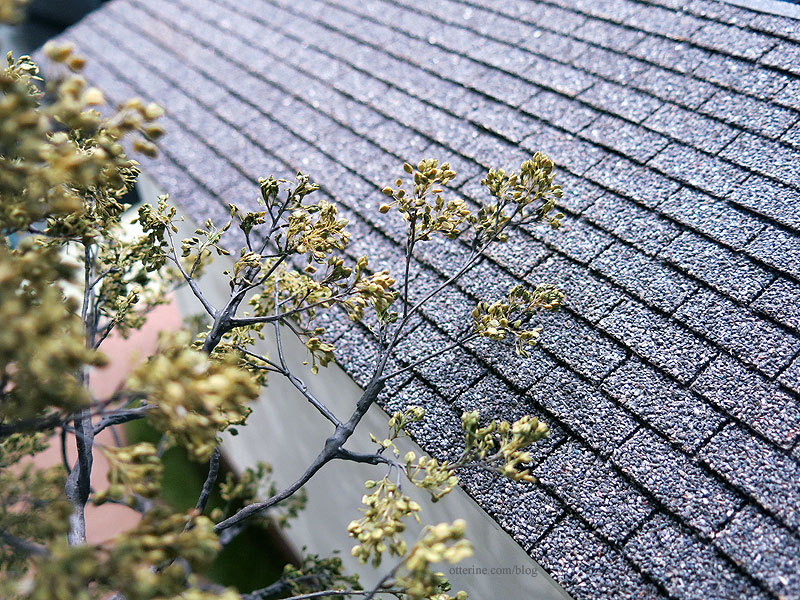
The canopy provides good coverage, but the bark texture is my favorite part. :]
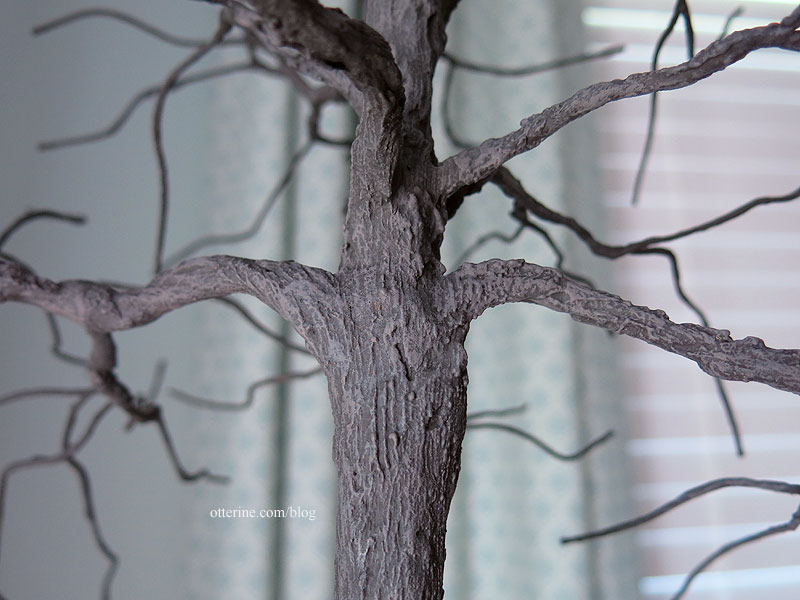
I made a birdhouse from a kit by Twilla’s Tiny Treasures, purchased at one of the local shows. I like a white birdhouse best, but next to a white house, spring green is my second favorite choice. It came with gingerbread detail, but I left that off for a simpler look.
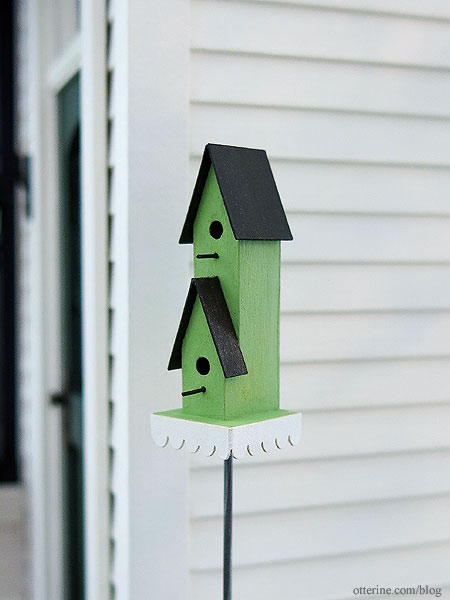
There’s a handy push mower to make quick work of the upkeep. It’s a Phoenix Model kit from Jennifer’s of Walsall. It’s recommended to use Devcon 5 Minute Epoxy, so I bought some from amazon (as an Amazon Associate, I earn from qualifying purchases). This stuff stinks to high heaven with the hardener smelling like rancid, rotten eggs, but it is as advertised at least.
I sprayed the handles and blades with Testors Model Master Metalizer Lacquer in Aluminum Plate. It buffs to a fine metallic finish. I hand painted the grips semi-gloss black. To keep it simple, I chose black for the wheels and guard. The hubs and connecting rods are Testors Flat Olive Drab, leftover paint from the Sopwith Camel from years back. After assembly, I touched up the paint and added some grime detailing…just enough to give this mower a few years of service. I glued the handles half-way between resting and upright so it would look natural while still being able to sit close to a wall, or against a tree.
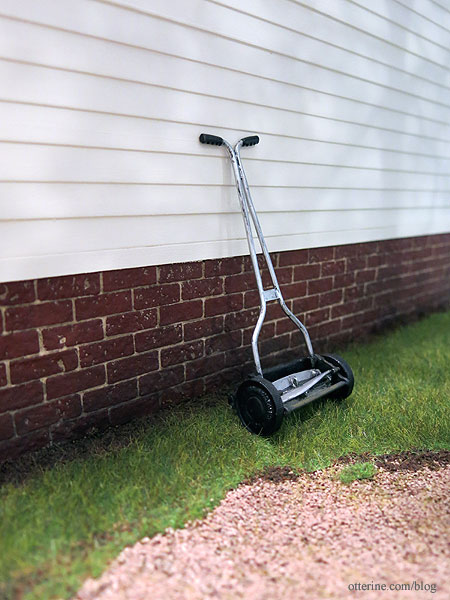
And, of course, when you’re back in 1915, you should have photos that feel as though you’ve stepped back in time.
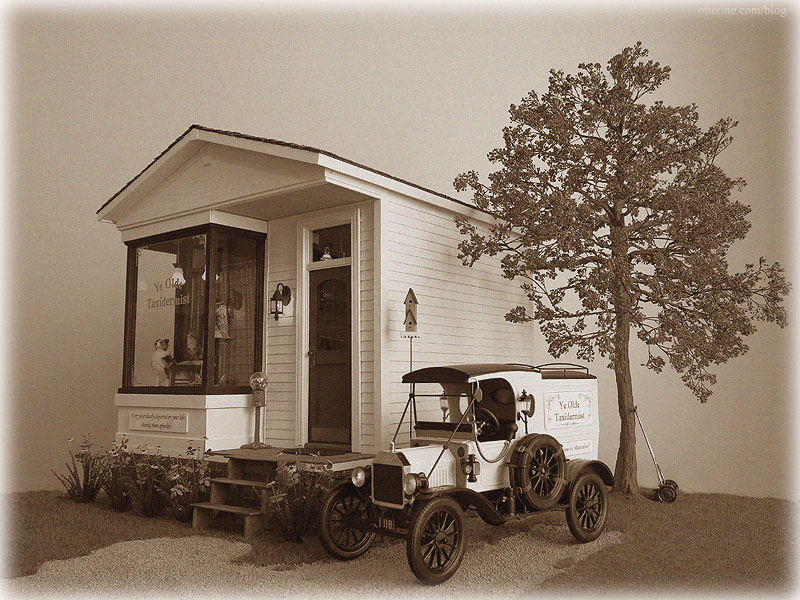
Let’s take the van for a spin!
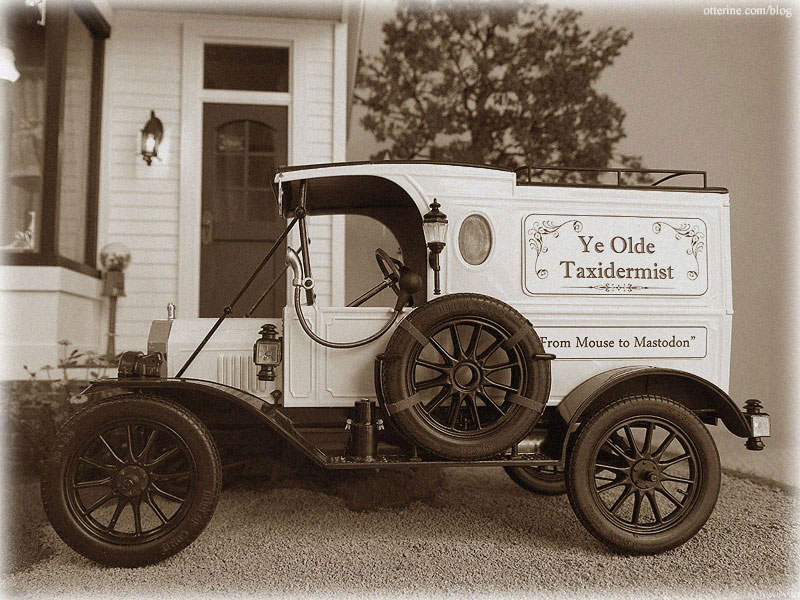
——
UPDATE: Ye Olde Taxidermist has won an Honorable Mention in the 2016 HBS Creatin’ Contest! It’s a great honor to have my work recognized. A huge thank you to HBS! You can see the winners and remaining entries posted here. Congratulations to all on your creativity and hard work!
A special thank you to Debora, Bill, Lyssa and Barbara for your support, friendship and contributions to the build! And, a warm thank you to everyone for your kind comments and encouragement along the way!






































